Horizon Forbidden West is so good that it deserves to be better.
Guerrilla Games’ sequel is routinely stunning, matching or outshining 2017’s Horizon Zero Dawn in nearly all respects. A grander scope, greater depth, and nearly unparalleled visuals have the potential to elevate the series to the upper echelon of open-world games. But undeniable shortcomings in a few key areas threaten to undo that accomplishment.
If you missed out on Zero Dawn, well, first of all, you should really get on that. It’s a great game, and essentially required playing if you’re planning to pick up Forbidden West. You could conceivably hop straight into the sequel—there’s a quick recap video at the start, and tutorials that re-walk you through some basics. But most everything in the gameplay and story in Forbidden West is additive, assuming a baseline familiarity with who Aloy is and what she can do.
So for the newcomers out there, here’s a quick primer. There are spoilers, but nothing the intro video of Forbidden West wouldn’t tell you. The game follows Aloy, who inhabits a far-future Earth on which all life was eradicated by a plague of robots that consumed all organic material. Thanks to a last-ditch effort from humanity, the Zero Dawn project, advanced artificial intelligence was able to reboot the biosphere and bring some plants, animals, and humans back to life, alongside terraforming robots that resemble creatures from Earth’s past. But due to extenuating circumstances we don’t really need to get into, all knowledge of the previous world was lost, and the humans that are left have reverted back to a tribal lifestyle, with some fantasy-race inspiration thrown in for good measure.
Oh, and Aloy is a clone of Zero Dawn’s creator, Elisabet Sobeck.
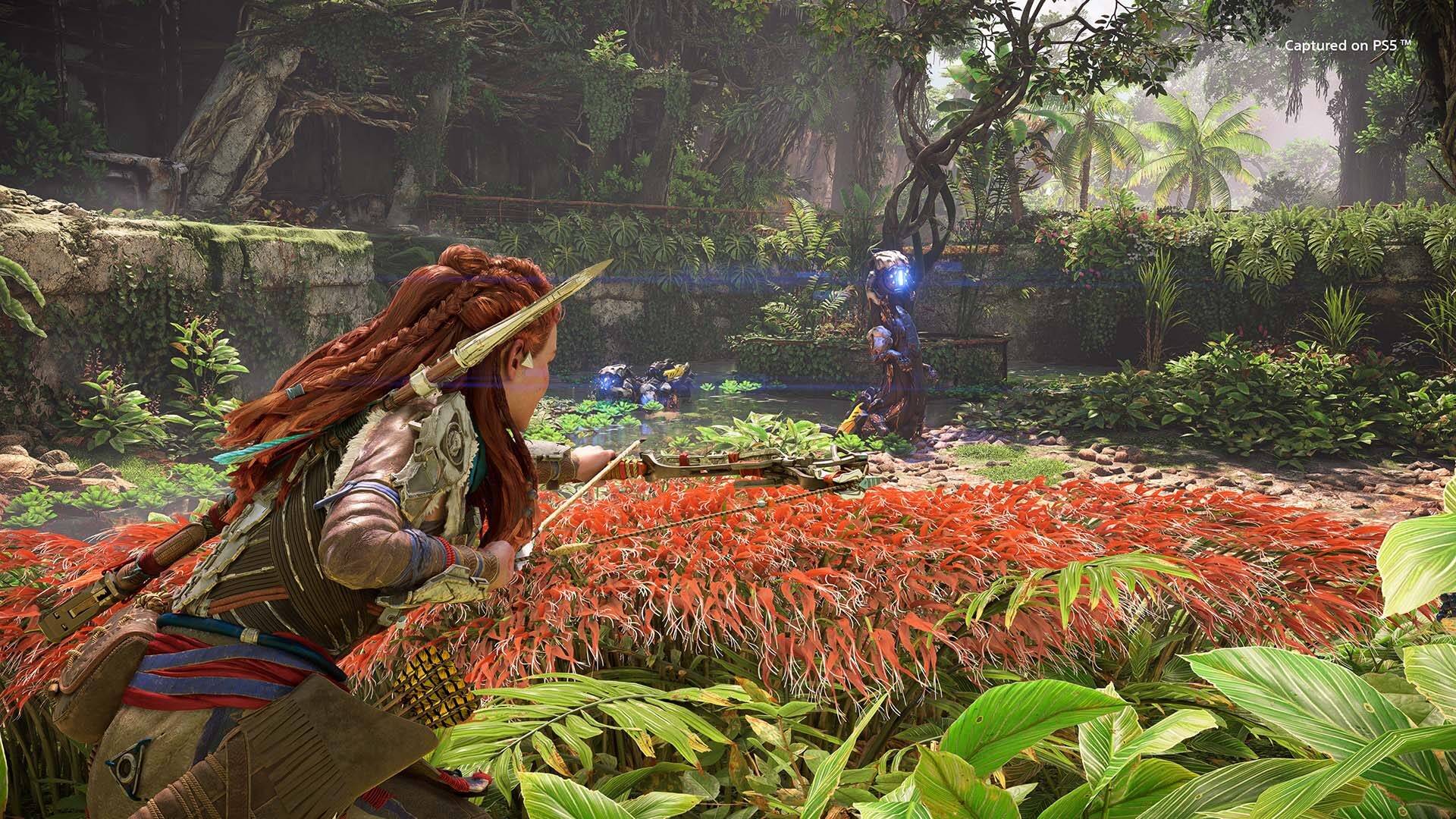
It’s a lot to digest, even teased out gradually as it was over the course of the first game. But all that convoluted backstory enabled Guerrilla to build a world that integrated almost perfectly with its spin on a familiar open-world gameplay loop. Aloy is a hunter-gatherer, and so much of what you do, both in Zero Dawn and Forbidden West truly feels like hunting and gathering. To craft ammo and restore your health, you need to gather plants, and to do that effectively you need to learn the different types and where they grow. To gather resources for crafting and upgrades, you need to hunt those beastlike machines, and often detach specific parts with well-aimed shots from your bow. Over time, without explicit prompting, you’re internalizing the rules of this world to see it the way Aloy surely sees it. It’s just solid, thematically consistent design.
Forbidden West builds onto that core with those age-old sequel watchwords of “more” and “new.” More machines to fight, more content and more types of it to occupy your time, new weapons and abilities, new gadgets that expand your range of motion.
Some of the additions to the last category—like the Shieldwing, which lets you glide down safely from any height or the late-game power to tame a flying mount—do feel like genuine, open-ended enhancements of what makes Horizon great. Others, like the Pullcaster—a grappling hook you can only use on special holds and objects—don’t do much more than inject a bit more variety into puzzles and still-less-than-stellar climbing segments.
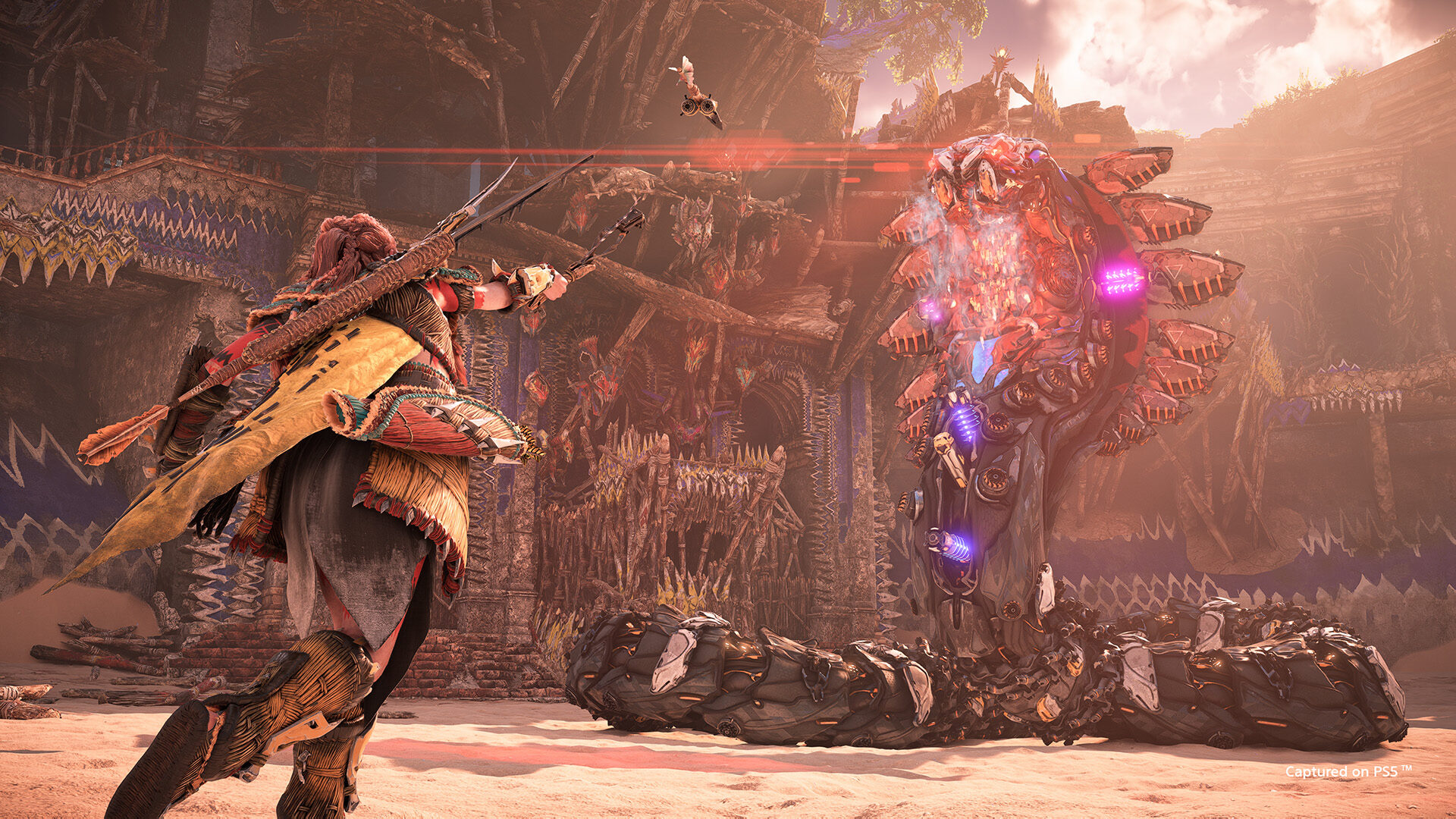
Improvements to combat come in the form of new weapon types, new combos designed to make alternating between melee with your spear and ranged combat more rewarding, and Valor Surges: special abilities you charge up during combat and then unleash for a limited-time boost to one particular area, like ranged damage, melee damage, or defense. Nothing on this front is bad, but neither is it essential. The new abilities and weapons are hardly revolutionary, and they don’t remedy the fact that fights against humans are still so much duller than fights against the machines. At the end of the day, they’re just new options that may or may not fit into your playstyle. I found myself relying on the same approach I used in the first game—heavy on bows with a good spread of elemental arrow types—and only really whipped out the Valor Surge when things got tough. There’s nothing wrong with that. The depth is there if you want it.
Ultimately, though, Forbidden West’s gameplay largely succeeds because of continuity. It’s still a blast to fight a robot T. rex (or giant bat or snake or plesiosaur, now) armed with primitive weaponry. There’s a simple thrill to facing down a machine eight times your height, drawing back an arrow, turning on bullet time (arrow time?), and trying to line up the perfect shot at an elusive weak point before time runs out and you get a faceful of steel claws.
The one aspect of Forbidden West where novelty does pay major dividends is its world. As you can probably guess from the title, the game sees Aloy traveling further west than she did in the last game, to a new region that runs from southwestern Utah to San Francisco (all of course reimagined to suit the post-post-apocalypse).
To call the world Guerrilla has crafted merely beautiful would be a disservice. I’m not sure any video game, trapped on a 2D screen and seen from the comfort of your own home, can actually deliver what philosophers call the sublime. But running on PlayStation 5, Forbidden West comes close, and it comes close all the damn time. The scope and detail of your surroundings combine with unbelievable lighting and particle effects to create stunning vista after stunning vista.
Here’s a screenshot from the start of the game, as Aloy is descending into what was once Zion National Park for the first time:
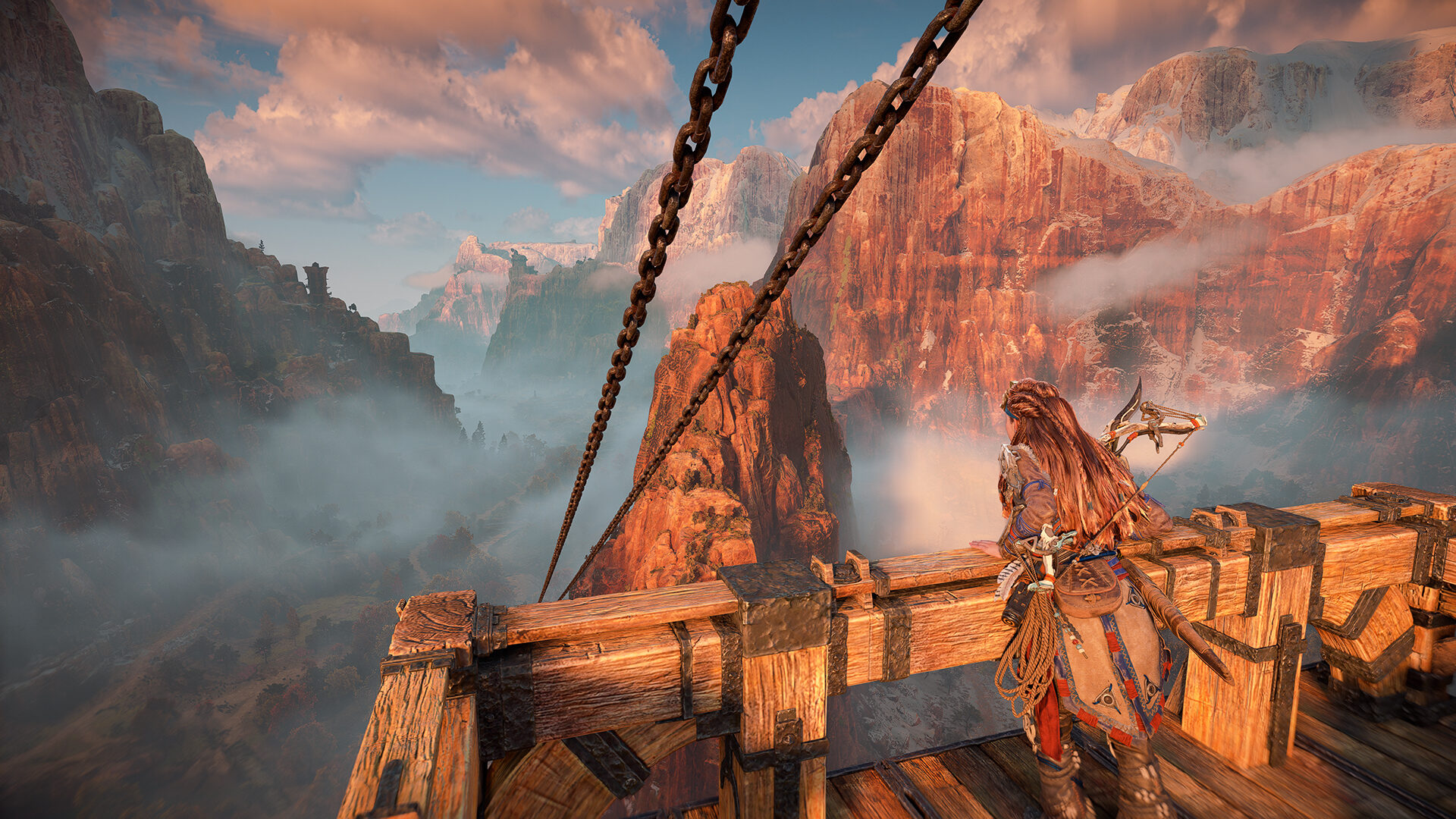
I took that. No publisher touch-ups, no trickery. That’s how the game looks. More importantly, that’s how the game feels. Get high enough pretty much anywhere on the map, and you’ll be treated to an awe-inspiring landscape that would make an 18th century painter blush.
To prove my point, I just booted up the game and it took all of 20 seconds to get such a view: The soft-glow of moonlight breaking through the clouds as they cascaded over Yosemite’s clifftops, fog settling into valleys below. Virtual air shouldn’t look this good. Maybe games shouldn’t look this good. I wouldn’t call it photorealistic, but Forbidden West might actually look better than real life.
But for all that the game does to impress with its consistent action and striking world, there are two missteps that threaten to undo those accomplishments. The first, and by far the biggest, is its story.
The premise starts off promising enough. The biosphere is collapsing, with blights and storms accelerating an environmental collapse, so Aloy needs to seek out a backup of the bioengineering AI Gaia to take control of the terraforming process. Even the early worldbuilding is as solid as ever. The two main tribes you encounter early on fit well alongside those from the first game. First, there’s the warlike Tenakth, who base their belief system on partially corrupted exhibits from a military museum. Then there’s the Utaru, a riff on wood elves who build their homes not among the trees but atop towering radio telescopes.
But as the story pivots to focus more on connections to the “Old World”—pre-collapse humanity—it gets so caught up in surprises and reversals that it loses sight of why the first game’s story succeeded. The narrative is too much: too much technobabble, too many MacGuffins, too many hidden agendas. It’s also not enough, with too little emphasis on the relationships and characters that should serve as the heart of the story.
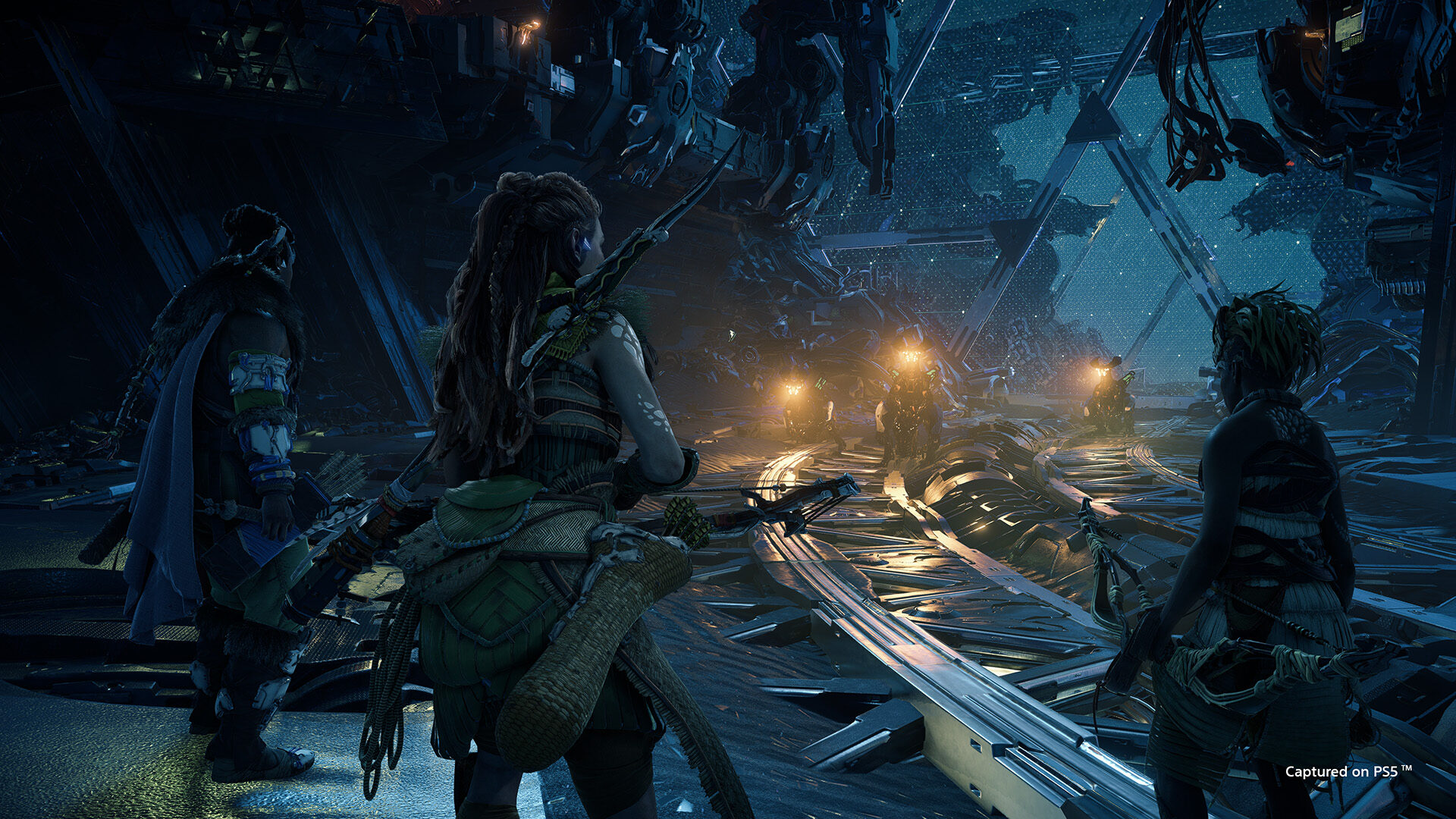
All told, Forbidden West clocks in around twice as long as Zero Dawn, if not longer. You’d think the extra time would allow for more room to explore the humanity of its cast and their connection to Aloy. No such luck. While the characters returning from the first game fare okay, since the groundwork had already been laid, Aloy’s interactions with her new allies and enemies feel remarkably rushed. Allegiances change in a heartbeat, crucial relationships built and rebuilt at whiplash speed across a handful of conversations. Moments that should be touching have all the poignancy of pieces being shuffled around a chessboard.
More criminal still is that Aloy gets no real arc of her own this time around. The best part of Zero Dawn’s narrative was watching a young girl grow into a strong woman even as everything she knew about her world and her own identity fell to pieces around her—maybe even because of it. Forbidden West feels like Guerrilla couldn’t figure out how to continue her growth and just punted instead.
Early on, there’s some lip service paid to the idea that Aloy’s a loner who doesn’t like to work with others, but not only is that rendered entirely irrelevant by the time you’re about a third of the way into the game, it’s also at odds with how the last game ended, when she rallied tribes near and far to save the city of Meridian. She can’t really be a reluctant leader or a lone wolf overcoming that impulse when she’s already proven she’s not—less still when she’s trusting people to help her just a few hours into this story.
In the end, the only things Aloy overcomes throughout Forbidden West’s story are big machines and big villains, and that purely physical struggle flattens her character. Flashes of anything deeper remain just that.
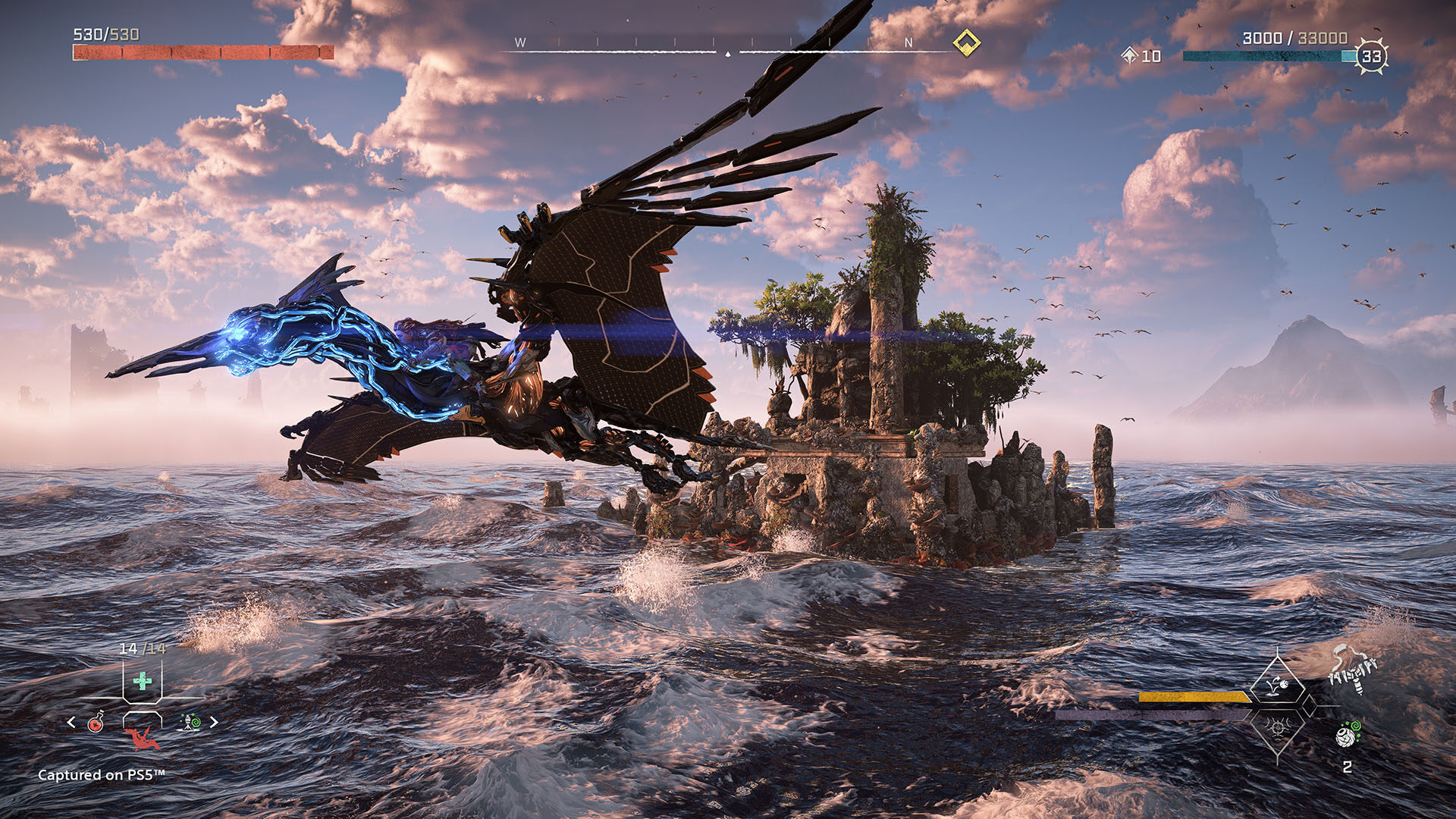
It’s a shame, too, because forcing the plot to carry the weight of the storytelling makes it that much more obvious how silly things get this time around. I realize it might feel a bit strange to complain about dumb plot points in a game whose established world already includes the extinction (and un-extinction) of all life on earth alongside rogue AI and, you know, robot dinosaurs. But the twists and turns here really do stretch credulity in a way that the maximalist elegance of the first game’s premise never did. By the time I reached the ending, I felt like I’d watched a steeplechase where 75 percent of the obstacles were sharks.
And, ugh, that ending. Zero Dawn felt as though it told a complete story, albeit one with room for future chapters. Forbidden West finishes with an overt sequel setup that undermines any sense of closure or triumph.
Sure, if this is going to be a trilogy (and it will be at least that, barring a nosedive in sales), you can always say Guerrilla is going the Empire Strikes Back route, with the second chapter closing on a downer note with an unresolved threat. But the lingering problems at the end of that film were deeply personal to the characters, brought about by their own actions, or both. Forbidden West ends with an escalation that’s comically unrelatable and entirely divorced from Aloy and her world. It’s like if Luke killed Vader in the Cloud City lightsaber duel, and then found a holocron telling him he had to go fight the Christian God. Okay, that’s hyperbole, but not nearly as much as it should be. I actually feel negative levels of excitement about where the story goes from here.
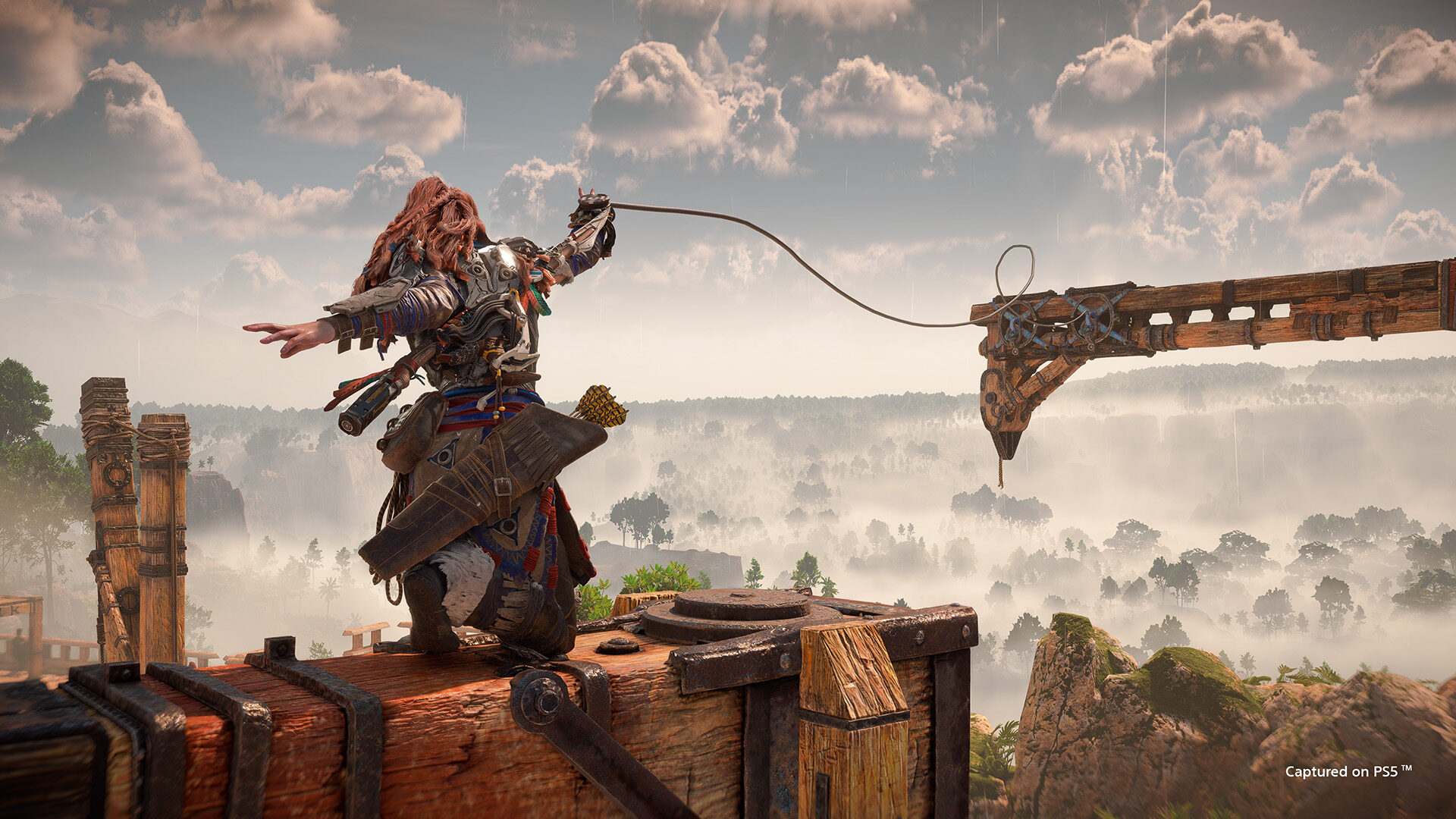
Forbidden West’s second misstep is one that’s a bit more nebulous: The game is launching prematurely. The version I played for the vast majority of my review time, without the day-one patch installed, suffered from serious technical hiccups. The screen would routinely flash black for a second or so to disguise unexpected loads. Some sidequests and other side content wouldn’t progress properly, leaving me unable to know whether I was missing something or the game was to blame. That breakdown in trust is extremely frustrating, to say the least.
Now that I’ve installed the day one patch, there’s been a marked improvement on many fronts, but the current state of the game is far from perfect. I still get those black-screen loads, albeit less frequently. On two occasions I’ve actually encountered a brand new, arguably worse problem, where the frame rate slows down to single digits and stays that way seemingly indefinitely. Some of my issues with side content have resolved themselves, but others persist. There’s a bunch of stuff I’ve already finished that’s lingering on my map as though I haven’t. One side mission still tells me to go speak to someone who never spawns in at the objective marker.
Judging by my reported completion percentage on the game progression screen—around 84 percent—I may be missing even more content due to similar bugs. I’ve traveled to every corner of the world looking for mission markers, and there are none left to be found. I have the Platinum trophy and every collectible but one, but I’m apparently missing out on more than a tenth of the game.
Perhaps it’s a simple calculation error? I can say for sure that, before I installed the patch, there were two categories of quests listed in the menus that I never even encountered by the time I wrapped up the story. Now, post-patch, they’ve just disappeared from the list. Were they content that was cut at the last minute, maybe throwing off my completion percentage in the process? I’m not sure. It’s entirely plausible that if I’d started my save after the patch, I wouldn’t be encountering some of these issues at all.
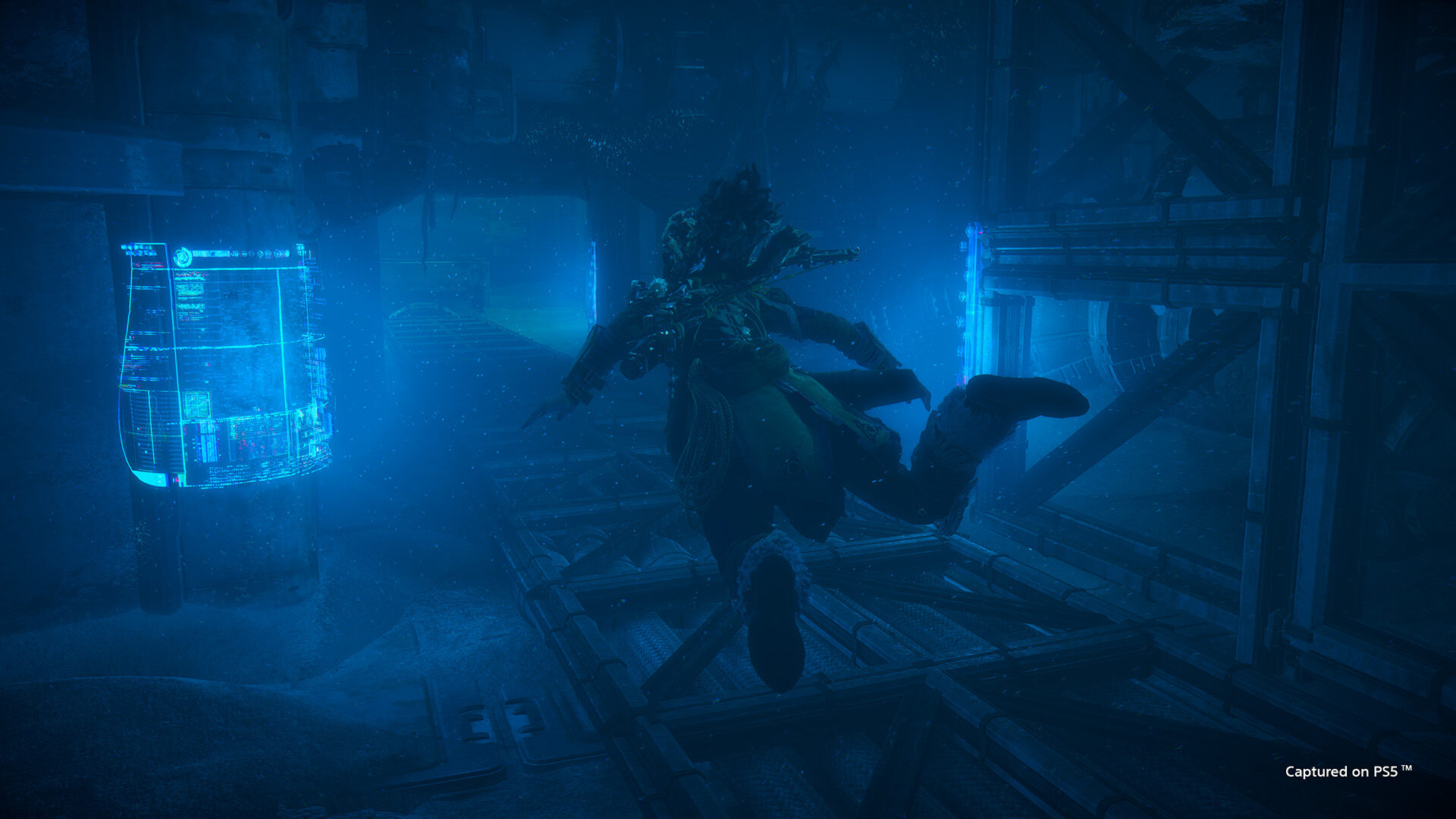
Still, given how much the day one patch fixed, and how much remains to be fixed in future patches, it’s hard not to feel that Forbidden West is being pushed out the door when it could’ve used a few more weeks or months of polish. I want to be clear: This isn’t Cyberpunk 2077 or Fallout 76, not by a long shot. But it’s also not up to the standard I’ve come to expect from Sony’s biggest first-party games, and that’s a shame.
Of course Guerrilla will continue to improve the game over time, and of course it’s not the first developer to rely on patches to get a game into shape up to and beyond the eleventh hour. But this new status quo is a terrible one for players and studios alike. I sincerely hope whatever lingering issues players encounter don’t overshadow the rest of the experience.
A game as good as Horizon Forbidden West deserves to be judged by and remembered for the fullest expression of its artistic vision, flaws and all, not because it hit some arbitrary date on a calendar.
|
★★★★☆
Horizon Forbidden West builds upon the formula of the first game in smart (if not always revolutionary) ways to craft an even stronger open-world experience. The stunning visuals make for a great showpiece of what Sony’s first-party studios can accomplish on PlayStation 5, with gameplay that holds up its end of the bargain. Unfortunately, storytelling missteps and a lack of polish keep Aloy’s latest adventure just shy of joining the all-time greats. |
Developer Guerrilla Games Publisher Sony Interactive Entertainment ESRB T - Teen Release Date 02.18.2022 |
| Horizon Forbidden West is available on PlayStation 5, PlayStation 4. Primary version played was for PS5. Product was provided by Sony Interactive Entertainment for the benefit of this coverage. EGM reviews on a scale of one to five stars. | |
